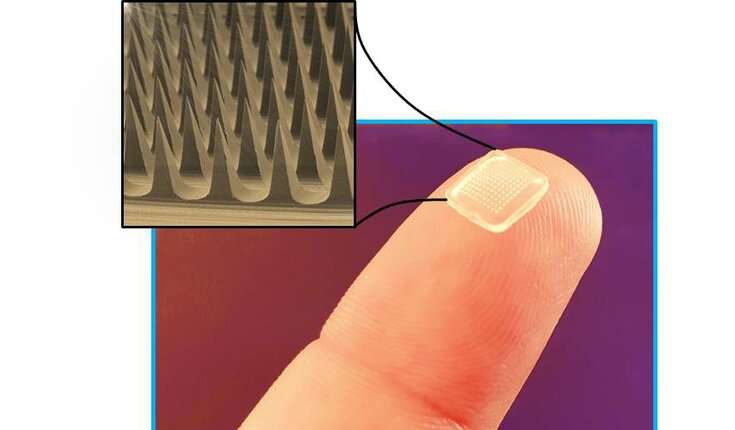
A recent study from the University of Helsinki monitors the breakthrough progresses in the development of microneedles for immunotherapy and discusses the challenges regarding their production. Researchers suggest using microneedles for immunotherapy due to the high abundance of immune cells under the skin. The aim is to vaccinate or treat different diseases, such as cancer and autoimmune disorders, with minimal invasiveness and side effects.
“Our study addresses the recent achievements in the development of microneedles for immunotherapy of hard-to-treat and chronic diseases to achieve the highest efficiency with minimal side effects,” says Professor Hélder A. Santos, from the University of Helsinki, Faculty of Pharmacy.
As a result of the dynamic nature of the human immune system, the current immunotherapy approaches have mostly been challenged by the lack of adequate long-term responses in patients. On the other hand, the development of microneedles has resulted in the improvement and expansion of immuno-reprogramming strategies since the dermis layer of the skin house a high accumulation of dendritic cells, macrophages, lymphocytes, and mast cells. These cells can transfer generated immunotherapeutic signals to the damaged organs.
According to the paper, microneedles maintain many outstanding properties, such as direct delivery of antibodies, allergens, and therapeutic antigens into the skin, minimal invasiveness, facile fabrication, excellent biocompatibility, convenient administration, and bypassing the first-pass metabolism that allows direct translocation of therapeutics into the systematic circulation. Moreover, transdermal microneedle can improve the biological effect of drugs through adjustable drug release.
Recent advancements of microneedles for immunotherapy of cancer
One of the primary objectives of cancer immunotherapy is the establishment of a broad tumor-targeting T cell repertoire that is able to recognize and destroy heterogeneous tumor cell populations. The paper indicates the suitability of the microneedles for this purpose and their future clinical use, owing to the short treatment time with improvement of patient convenience, and prolonging the overall survival compared to traditional vaccination.
In the case of intramuscular or subcutaneous vaccination, patients might experience stress, fear, pain, and undesirable specific immune responses. In this regard, using microneedles could be a good choice to achieve maximum delivery while limiting side effects. In conclusion, microneedle patches may represent an excellent alternative to conventional cancer vaccine designs by allowing a painless administration in the skin area, which is rich in antigen-presenting cells.
Finally, microneedles can also play a role in improving the efficacy of immune checkpoint inhibitors, allowing for local delivery in the tumor area with a decrease in the immune side effect associated with systemic delivery.
Unanswered challenges and future trends of microneedles for immunotherapeutic applications
According to the researchers, concerns regarding the future success of microneedles for clinical immunotherapy are also dependent on FDA approval for novel biomaterials used in this delivery system for microneedles fabrication.
“In addition, future developments should take into account some of the current challenges, including the difficulty of precise coating of biomolecules on the microneedles and insufficient delivery of therapeutic antigens, allergens, or immunotherapeutic drugs to the desired site,” says Professor Santos.
The improvement of the mechanical properties of microneedles is another decisive factor for successful clinical translation and future commercialization. The mechanical characteristics of microneedles must meet two properties to ensure successful immunotherapy. First, the insertion force should be enough to neglect the skin friction force for the insertion of the microneedles before puncturing the skin. Second, the insertion force must be higher than the skin force to perforate the skin and create holes in the epidermis/dermis layer.
Researchers have recently focused on polymer science to fabricate biocompatible or dissolvable polymeric microneedles with minimum side effects. Therefore, it is expected to see a tremendous interest in designing biocompatible and dissolvable microneedle systems in the near future with current advances in polymer science.
“The selection of a suitable material that contributes to the localization of antigen within the microneedles is a substantial issue that needs much attention to optimize immunotherapy of various diseases by microneedles. We estimate that in the near future, we will observe a high interest in the design and fabrication of biocompatible and dissolvable polymeric microneedles systems for immunotherapeutic applications, among others,” concludes Professor Santos.
Source: Read Full Article
